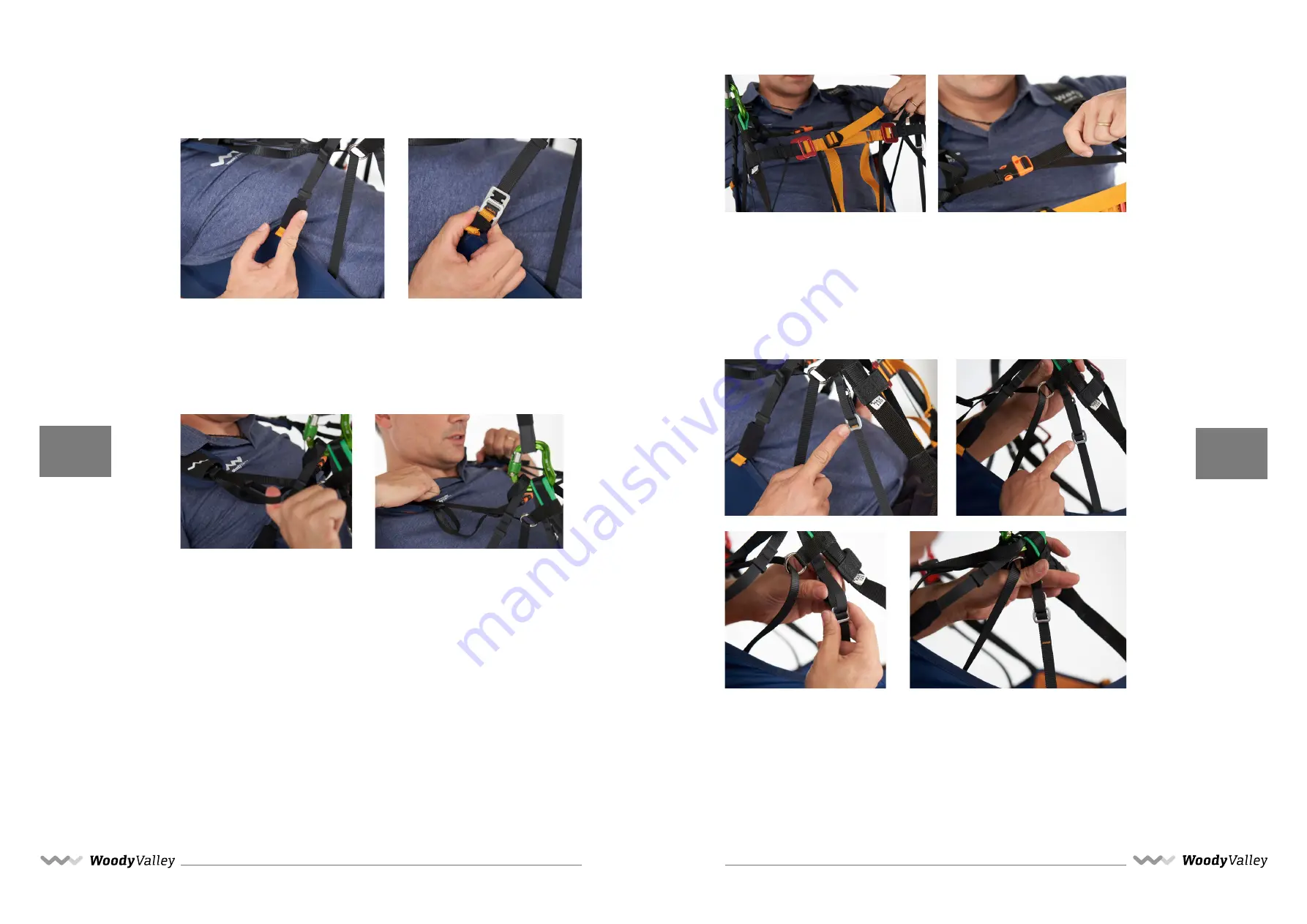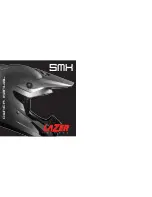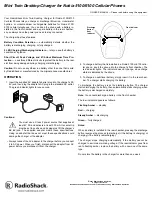
ENG
ENG
Wanì light 2 - owner’s manual
Wanì light 2 - owner’s manual
16
17
2.2.1- Back adjustment
This adjustment allows you to select the inclination of the torso with
respect to the vertical flight axis.
2.2.2 - Shoulder-pad adjustment
Adjustment of the shoulder pads compensates for the variation in pilot
height and the adjustment buckle is located at the apex of the same.
The shoulder pads also bear part of the weight of the torso for impro-
ved comfort. We recommend adjusting the shoulder pads so that they
fit against your shoulders without being too slack or too tight.
2.2.3 - Chest-strap adjustment
The chest strap controls the distance between the two karabiners,
which can vary from 36 to 48 centimetres. For the first flight, we sug-
gest setting the chest strap to around 40 cm and then locating the pre-
ferred length in flight by means of gradual adjustment. When the chest
strap is shorter and tighter, stability is greater. An excessive distance
between karabiners does not improve glider performance, and tighte-
ning the chest strap excessively may exacerbate the ‘‘twist’’ effect that
may follow an asymmetric collapse of the sail.
At shoulder strap height, we can also find a small coupling that acts as
a shoulder strap fastener and prevents the shoulders from coming out
during take-off run. The plastic coupling also holds a practical whistle
which can be helpful in the event of an emergency.
CAUTION:
Each adjustment must be carried out symmetrically on both sides.
2.2.4- Seat position adjustment
This adjustment varies the angle between the legs and the back (sea-
ting depth), distributing the load between the seat and the back, the-
reby providing the pilot with greater comfort.

































